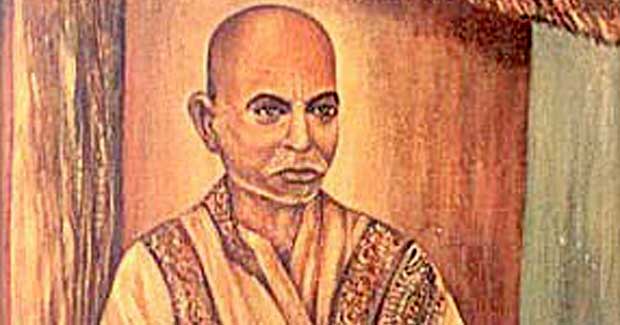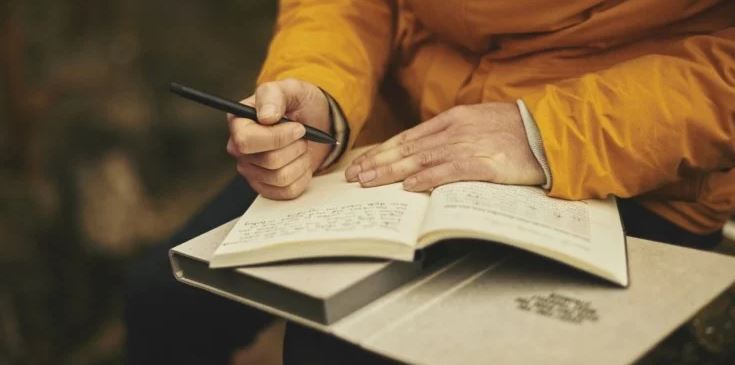By Sambeet Dash

Pathani Samanta dabbled in astronomy producing results with immaculate accuracy at a time modern science and astronomy were at its infancy. He died in the year 1904.
Born in a village near the present-day district of Nayagarh in Odisha, Samanta Chandrasekhar deeply studied our Ancient Hindu texts of astronomy written in Sanskrit and was able to decipher the hidden knowledge which supplemented his instinct and intuition.
Pathani Samanta used his grasp of astronomy to measure the distance of celestial bodies from earth amazingly close to what has been found by present-day space scientists. Without any access to the modern instruments, he took help from a hollow bamboo pipe and a couple of sticks for his measurement. Pathani Samanta’s findings were recorded in his book Siddhanta Darpana (The Gospel Treatise Mirror). This book found a mention in the European and American press in 1899.
During his childhood, Pandit Samanta’s passion was watching the movement and position of moon and stars in the night when the air was crispy, pollution-free and crystal clear to gaze.H e watched the celestial bodies when the sky was bright and blue during the day. During the day he would closely observe shadows of the Sun and their length. It is said that he could measure the distance of vultures flying high in the sky using his naked eyes and wooden instruments.
In the year 1894 Chandrasekhar was troubled about his health due to chronic bouts of colic, commonly called PETA MARA BEMARI then. By the age of 59 – the average life expectancy was less than 50 then – he had reasons to be worried, carrying the burden of 5 sons and a daughter, not to mention his shy but supportive wife. Samanta was a poor man, being dependent on meager income received from the King of Manjusha who was impressed by the Pandit’s skills by correctly measuring the height of Mahendra Giri hills using his bare hands and his famous paraphernalia of bamboo sticks and wooden accessories. His ability to correctly predict Lunar and Solar eclipses earned him the title of MAHAMOHAPADHYAYA (The Very Wise and Learned One) by then British India Government – first time ever conferred to a non-Brahmin in Odisha.

Though poor, Pathani Samanta’s fame in Astrology and Astronomy traveled far and wide, enough to get an audience with Commissioner Cook of Cuttack. The duo of Samanta and his son traveled downstream on a boat on River Mahanadi to Cuttack and reached Cook SAHEB’s (a colonial way of addressing the Englishmen and still reserved for the elites in India) on one sultry August afternoon. The Commissioner who was leaving for a game of Tennis told them to meet him the next day.
Following morning, Cook took Pathani Samanta to the bank of river Kathajodi. Pointing to the Saptasajya range of mountains, the Commissioner challenged the later to measure its height. Sri Chandrasekhar instantly got to work with his hollow bamboo stick and other instruments, burying his head, making calculations on the ground using a piece of chalk – finally deriving his figure of 1178 cubits and 16 fingers. Commissioner Cook cross-checked the height of Saptasajya mountains from his official records. The result was tantalizingly close.
An impressed Cook shook hands with Pathani Samanta. The first thing the Pandit did after coming out of Commissioner’s residence was to take a dip in the river Mahanadi – for he touched an MLECHHA (outcaste). Touching a beef-eating, Christian White man those days was tantamount to sacrilege; so he needed to purify himself by taking a bath in the river before it was too late.
On another occasion, during a bright, starry night sitting on the verandah of the house of Jogesh Chandra Ray, a Professor of Science in Cuttack, Pandit Samanta was challenged by the university lecturer to measure the distance between Mars and Venus shining on the Western sky. The shabbily dressed old man got busy with his instrument and making calculations using chalk on the verandah. To the Professor’s surprise, the calculation done by Pathani Samanta came extremely close to the actual distance between the two planets. When Sri Jogesh Chandra Ray showed our Pandit a modern Telescope, the old man started dancing as he could see from close up his favorite celestial bodies that he gazed at from a distance over several decades.
But his joy was short-lived, as Samanta Chandrasekhar didn’t live long. His Colic got better of him, slowly consuming him, destroying the body of one of the finest brains Odisha had ever seen. Pathani Samanta was a twinkling, scintillating star of Odisha and a beacon for the current generation and generations to come.
Sambeet Dash is an Odia technocrat living in Georgia US.























Well written Sambeet. Did nit know about thus genius earlier.
Chandrasekhar